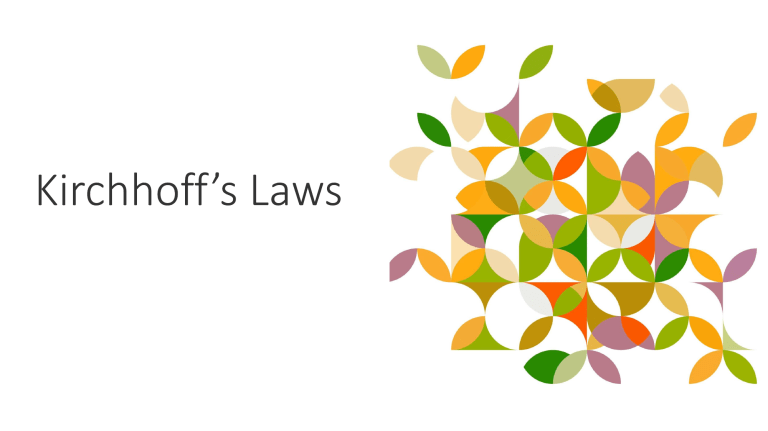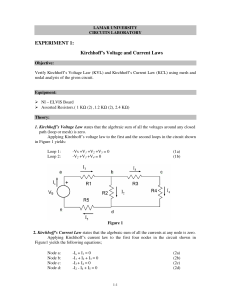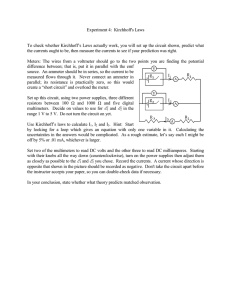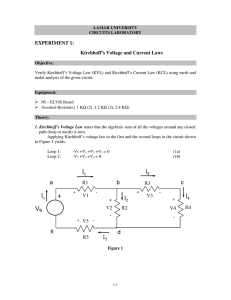
Introduction • Ohm’s law by itself is not sufficient to analyze circuits. However, when it is coupled with Kirchhoff’s two laws, we have a sufficient, powerful set of tools for analyzing a large variety of electric circuits. Kirchhoff’s laws were first introduced in 1847 by the German physicist Gustav Robert Kirchhoff (1824–1887). These laws are formally known as Kirchhoff’s current law (KCL) and Kirchhoff’s voltage law (KVL). • A branch represents a single element such as a voltage source or a resistor. • A node is the point of connection between two or more branches. • loop • Kirchhoff’s current law (KCL) states that the algebraic sum of currents entering a node (or a closed boundary) is zero. The sum of the currents entering a node is equal to the sum of the currents leaving the node. • Kirchhoff’s voltage law (KVL) states that the algebraic sum of all voltages around a closed path (or loop) is zero. Example Problem 1 • Find 𝑣1 and 𝑣2 in the circuit below. Example Problem 2 • Determine 𝑣0 and 𝑖 in the circuit. Example Problem 3 • Find 𝑖𝑜 and 𝑣𝑜 . Example Problem 4 • Solve for currents and voltages in the circuit shown. Problem Set 3 1. Find the currents and voltages in the circuit shown. 1. Find 𝑖𝑜 and 𝑣𝑜 .






